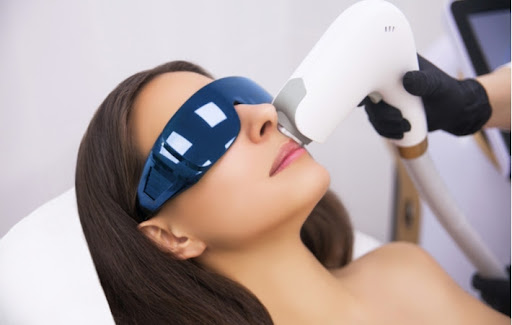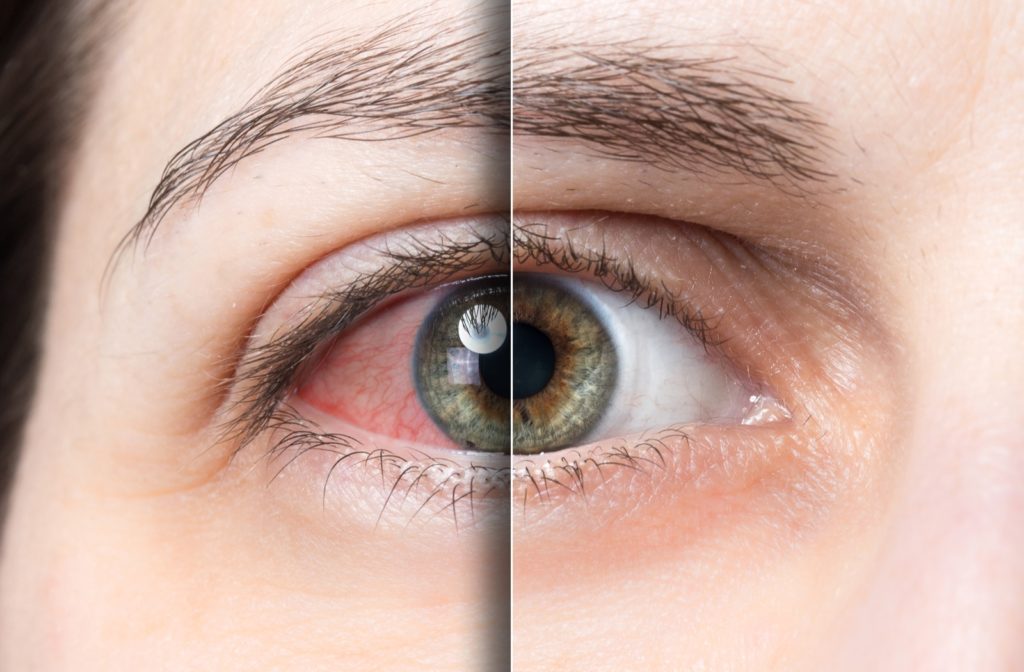You probably rarely think about your eyes—until they’re bothering you. And once they are, there’s almost nothing more irritating. If you notice a gritty or burning sensation in your eyes, you may be experiencing dry eye.
Dry eye is a common yet complex condition. Varied underlying issues and environmental factors can cause your eyes to feel uncomfortable or even downright painful.
Complex conditions require innovative solutions. A skilled optometrist can evaluate your symptoms and determine what’s causing your dry eye. In many cases, intense pulsed light therapy (IPL) might be the right treatment to help you find relief.
Let’s learn more about dry eye and IPL!
Symptoms of Dry Eye
If you have any of these symptoms, particularly in both eyes, it’s time to see your optometrist for a dry eye diagnostic:
- Stinging, burning, or scratchy feeling
- Gritty feeling
- Foreign body sensation
- Red or watery eyes
- Blurry vision or light sensitivity
- Eye fatigue or tired eyes
- Difficulty driving at night
- Stringy mucus originating from the eyes
What Causes Dry Eye?
More than 16 million Americans suffer from dry eye. The condition is exactly what it sounds like—the eyes are not receiving enough lubrication to keep them moist, nourished, and comfortable.
Dry eye occurs when the eyes either don’t produce enough tears, or when the tears they do produce are of low quality. Too few tears account for only about a tenth of dry eye cases, while tears lacking in quality are the main cause.
For good quality tears, the tear film needs to be balanced. It is made up of 3 layers—a mucus layer to keep the tears on the eye’s surface for long enough to nourish it, a water layer to keep the eye hydrated, and an oil layer to keep the water from evaporating too quickly.
An imbalance in the layers can often lead to dry eye.
Meibomian Glands
The meibomian glands may also be a culprit in your dry eye. These tiny glands line the upper and lower eyelids and are responsible for producing the oil layer of the tear film. If the glands are clogged, oil might not be produced in a large enough quantity to be effective.
Blocked meibomian glands can be caused by inflammation. IPL therapy can help to treat the underlying causes of inflammation, helping you get rid of dry eye for good.

So, What Is Intense Pulsed Light Therapy?
Originally developed for use in dermatology, Intense Pulsed Light (IPL) Therapy is an innovative way to treat dry eye. During the treatment, a controlled spectrum of light is used to help to liquefy any clogs in the meibomian glands.
Trapped and hardened oil (known as meibum) can then be expressed by your optometrist. The light also targets the blood vessels around the eye in order to reduce inflammation. Less inflammation helps to keep the glands clear.
IPL treatment is quick and comfortable. It’s an in-office procedure performed by your optometrist. Normally, a full course of treatment takes between 1 and 4 sessions. Each session is about 15 minutes long.
During the treatment, cooling gel is applied around the eyes and you’ll be provided with specialized eye shields to protect you from the light. There may be some warmth, but the treatment is normally quite comfortable and you can go about your day immediately after leaving your optometrist’s office.
Will I Find Relief?
Most patients get relief in just a few minutes after the initial session! IPL also targets redness around the eyelids, helping you not only feel better but look better too.
IPL helps break the cycle of chronic dry eye by targeting the source of inflammation. It’s non-invasive, has very few complications, and the results of the treatment can be maintained long-term. IPL is also well-tolerated among most patients.
Time to Talk to Your Optometrist About IPL
The first step to finding relief from dry eye is to book an appointment with your optometrist. There’s no need to suffer in silence with uncomfortable eyes. Ask about IPL therapy as a method of treating the underlying causes of dry eye.



